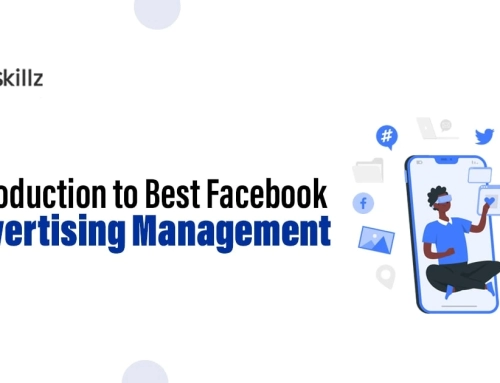As branding guru Marty Neumeier says, a brand strategy is “a plan for the systematic development of brand in alignment with a business strategy, Logo is simple of the brand to identify the product , Marty Neumeier says, a brand “Brand is the result a customer’s gut feeling about a product, service, or company”
We divide the brand strategy process into three separate steps. We lead you through the development of your Brand Heart (the essence of your brand), Brand Message (how you represent who you are), and Visual Identity (the visual expression of your brand).
By the end, you’ll have a complete brand strategy that’s been condensed into brand-new brand rules that may help you actualize your brand.
A brand strategy is a long-term plan that outlines how a company intends to create, develop, and market its brand in order to achieve its goals. A strong brand strategy is essential for companies to differentiate themselves from their competitors, build brand equity, and create customer loyalty.

A brand strategy typically includes several components, including:
Table of Contents
Brand positioning:
Brand positioning refers to the way in which a brand is perceived in the minds of its target customers in relation to its competitors. It involves developing a unique identity and value proposition for the brand that sets it apart from its competitors and appeals to its target audience.
The process of brand positioning typically involves defining the brand’s target audience, understanding their needs and preferences, and identifying the unique benefits and attributes that the brand can offer them. This may involve conducting market research, analyzing competitor offerings, and developing a clear understanding of the brand’s strengths and weaknesses.
Target audience:
Target audience is a critical component of a company’s marketing strategy. It involves identifying the specific group of customers that a company wants to reach with its brand and tailoring its marketing efforts to effectively reach and engage with that group.
To identify the target audience, companies typically conduct market research to gain insights into the demographics, interests, and behaviors of their potential customers. This may involve analyzing data on customer age, gender, income, education, and geographic location, as well as understanding their buying behaviors, values, and preferences.
Once a company has a clear understanding of its target audience, it can tailor its marketing efforts to effectively reach and engage with that group. This may involve developing targeted advertising campaigns that speak to the interests and values of the target audience, creating content that resonates with their needs and preferences, and using social media and other digital channels to connect with them directly.
Brand messaging:
Brand messaging is an important aspect of a company’s overall branding strategy. It involves developing a clear and consistent message that effectively communicates the brand’s value proposition to its target audience.
The goal of brand messaging is to create a compelling and memorable message that resonates with the target audience and inspires them to engage with the brand. To develop an effective brand message, companies must first have a clear understanding of their target audience and their needs, preferences, and buying behaviors.

Brand identity:
Brand identity is the visual and sensory representation of a brand. It includes all the elements that make up the brand’s visual identity, including the logo, color scheme, typography, packaging, and other visual and sensory elements that create a distinctive and recognizable brand image.
The goal of brand identity is to create a strong and consistent visual representation of the brand that resonates with the target audience and helps to differentiate the brand from its competitors. This is important because a strong brand identity can help to build trust and recognition among customers, leading to increased brand loyalty and higher sales.
Brand marketing:
Brand marketing is a strategic approach to promoting a brand and creating awareness among its target audience. It involves developing a comprehensive plan that includes various marketing tactics to effectively reach and engage with the target audience.
The goal of brand marketing is to build brand recognition and awareness, increase customer engagement and loyalty, and ultimately drive sales and growth. To achieve this, companies typically use a variety of marketing tactics, including advertising, public relations, social media, and other promotional activities.
Brand measurement:
Brand measurement is the process of tracking and evaluating the success of a brand strategy over time. It involves establishing key performance indicators (KPIs) to track progress and make adjustments as needed to ensure that the brand strategy is effective and driving the desired results.
KPIs are specific metrics that are used to measure the success of a particular aspect of the brand strategy. They may include measures such as brand awareness, customer engagement, customer loyalty, sales growth, and other metrics that are relevant to the company’s goals and objectives.
Overall, a brand strategy helps a company to establish a strong and unique brand identity that resonates with its target audience, creates customer loyalty, and drives business growth.
how to create one for your business

A brand strategy helps define who you are, what you stand for, and what makes you unique. In this blog post, we’ll explore the key components of a successful brand strategy and provide tips on how to create one for your business.
Define Your Brand Identity
Establishing your brand identity is the first stage in developing a brand strategy. This includes your brand name, logo, tagline, and brand story. Your brand identity should be unique, memorable, and easy to recognize. It should also reflect your company’s values, mission, and vision.
Understand Your Target Audience
You must comprehend your target market in order to develop a successful brand strategy. Who are they? What are their needs and desires? What motivates them? Once you understand your audience, you can tailor your messaging and branding to appeal to them.
Research Your Competitors
Researching your competitors is an important part of developing a brand strategy. You need to understand what they are doing well, what they are not doing well, and how you can differentiate yourself from them.
Look at their branding, messaging, and marketing efforts to get a sense of what is working and what isn’t.
Develop a Brand Voice and Tone
Your brand voice and tone are important components of your brand strategy. They help you communicate your brand’s personality and style. Your brand voice should be consistent across all your marketing efforts, including your website, social media, and advertising. It should also align with your target audience and brand identity.
Create a Marketing Plan
Once you have defined your brand identity, target audience, and brand voice, it’s time to create a marketing plan. This plan should outline your marketing goals, target audience, messaging, and tactics. It should also include a budget and timeline for your marketing efforts.
Monitor and Measure Your Brand Strategy
Finally, it’s important to monitor and measure the success of your brand strategy. This will enable you to determine what is and is not working so that you may modify your plan as necessary. Use metrics like website traffic, social media engagement, and sales to track your progress and make data-driven decisions.

Allows you to create better marketing strategies
Marketing and advertising are vital parts of branding. That’s because they need to be in line with your brand values and positioning.
But, without any guiding ideas, your marketing activities could easily fail. When it happens, branding can save the day! It serves as the framework or set of rules for sensible strategies.
Helps increase your company value
Every company wants to do a profitable business. You can identify the best prospects and raise company value with the proper branding.
Improves employee satisfaction and morals
In general, if there are no guiding principles at work, people feel demotivated and disincentivised. And the likelihood of this happening can rise in the absence of good branding.
On the other side, branding cultivates motivation and positive business culture by supporting similar employees’ beliefs and incentives.
gives the market a sense of trust
If you brand yourself well as a new firm, you’ll be more likely to attract customers. Think about your primary audience and the goals you want to accomplish. This would aid in your comprehension of the chances you ought to look for and the actions you have to take to foster confidence.
Your potential customer or buyer will feel more at ease making a purchase from you thanks to your branding.

8 Types of Branding
While each sort of branding has its own significance and is utilised throughout the world, none of them may be employed at the same time. This is so because each type has its own set of goals and regulations.
- Personal branding
- Service branding
- Product branding
- Cultural branding (Also known as geographic branding)
- Retail branding
- Online branding
- Offline branding
- Corporate branding
1.Personal branding
Personal branding is the process of creating a unique and consistent image or reputation for oneself, with the goal of establishing oneself as a thought leader or expert in a particular field or industry. It involves identifying and showcasing one’s strengths, skills, and unique qualities to differentiate oneself from others and build a recognizable personal brand.
2.Service branding
Service branding is the process of creating a unique and differentiated image or identity for a service offering. It involves developing a strong and consistent brand message that communicates the unique value proposition of the service, establishes an emotional connection with customers, and builds customer loyalty.
3.Product branding
Product branding is the process of creating a unique and differentiated image or identity for a product, in order to differentiate it from competing products and establish it in the minds of consumers. The objective of product branding is to create an emotional connection with customers and build customer loyalty by communicating the unique value proposition of the product.
3.Cultural branding
Cultural branding is a type of branding strategy that involves building a brand by tapping into the cultural values, beliefs, and practices of a particular group or society. It involves creating a brand that aligns with the cultural identity of the target audience and resonates with their shared values and beliefs.
5. Retail branding
Retail branding is a tactic for creating a positive image of your store in the minds of your customers. It’s the deliberate steps you take to evoke positive feelings and encourage customers to see your business in a certain way.
6. Online branding

Online branding, also known as digital branding or internet branding, is the process of establishing and promoting a brand’s image, products or services through digital channels, such as websites, social media, email marketing, and online advertising.
7.Offline branding
Offline branding, also known as traditional branding, is the process of establishing and promoting a brand’s image, products, or services through non-digital channels, such as print media, television, radio, billboards, events, and other forms of out-of-home advertising.
8.Corporate branding
Corporate branding is the process of creating and promoting a strong and recognizable brand identity for a company as a whole, rather than for individual products or services. It involves developing a unique brand message and visual identity that reflects the company’s values, culture, and mission, and that resonates with its target audience.
conclusion
Brand strategy is a critical component of any business, as it helps to establish and promote the brand identity, message, and value proposition. A successful brand strategy should be comprehensive, integrated, and adaptable, and should incorporate all aspects of the company’s operations.
It should focus on developing a unique and consistent brand identity that resonates with the target audience and sets the company apart from its competitors. This can be achieved through effective brand messaging, visual identity, and marketing and advertising strategies, among other tactics.
Ultimately, a strong brand strategy can help companies establish a competitive advantage in the market, build customer loyalty, and increase brand recognition and awareness, driving business growth and success.













Leave A Comment